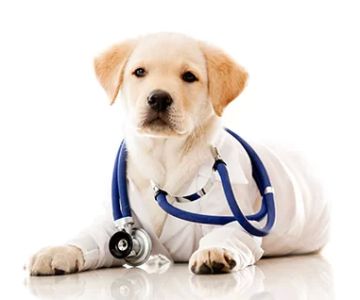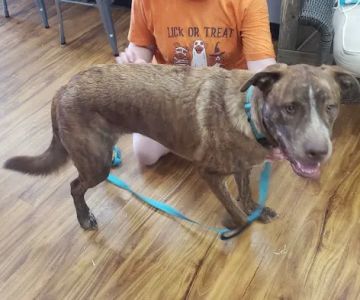Introduction: The Risks of Dogs Eating Dangerous Foods
As a pet owner, one of the most worrying things can be when your dog starts munching on something they shouldn’t, especially when it’s dangerous food. While dogs are often known for their curious nature, there are certain foods that can seriously harm their health. Some foods we consider delicious and safe for humans can be toxic to dogs, and this can lead to serious medical issues. It’s crucial to understand the risks involved and know how to protect your dog from these dangers.
Throughout my journey as a dog parent, I’ve learned that preventing your dog from eating dangerous foods requires both knowledge and proactive care. It’s not just about knowing what foods are harmful, but also about creating an environment where your dog stays safe from temptation. In this article, I’ll share the strategies and precautions I’ve implemented to keep my dog healthy and safe from the dangers of certain foods.
1. Understand Which Foods Are Dangerous for Dogs
First and foremost, it’s essential to know which foods are dangerous for dogs. Some of the most common toxic foods include chocolate, grapes, onions, garlic, and certain artificial sweeteners like xylitol. These foods can cause a variety of health problems, ranging from digestive issues to more severe conditions like organ failure or even death in extreme cases.
For example, when I first brought my dog home, I was surprised to learn that grapes, a fruit I thought was harmless, could lead to kidney failure in dogs. This information alone made me more diligent about researching which foods were safe and which were harmful. Knowing these foods allowed me to be proactive in keeping them out of reach.
2. Create a Safe Eating Environment
The next step in preventing your dog from eating dangerous foods is to create a safe eating environment. This means making sure that any food that could be harmful is out of your dog’s reach. For example, I always make sure that kitchen counters and dining tables are clear of any food items when my dog is in the room.
I also made sure to train my dog to stay away from the kitchen while I’m preparing meals. Positive reinforcement works wonders here. Using treats and praise, I taught my dog the “leave it” command, which comes in handy when I see them eyeing something they shouldn’t have. Consistency is key, and setting boundaries from the start helps establish good habits that last.
3. Keep Harmful Foods in Safe Storage
Another simple yet effective way to prevent your dog from eating dangerous foods is proper storage. I’ve learned to keep any food that could potentially harm my dog securely stored in cabinets or high shelves. For instance, items like chocolate, baked goods with raisins, and onions are all stored well out of my dog’s reach.
Another helpful tool is a pantry lock or childproof locks on cabinets, especially if your dog is particularly clever at getting into things. I’ve also invested in airtight containers for certain foods like nuts, which are toxic to dogs in large quantities. By taking these simple steps, I’ve made sure that my dog has no access to food that could harm them.
4. Educate Family Members and Guests
When it comes to preventing your dog from eating dangerous foods, education is key. My family and friends know the foods that are off-limits for my dog, and I make sure they’re aware of the dangers. Whether it’s not offering my dog any table scraps or making sure they don’t leave food unattended, education plays an essential role.
For example, during family gatherings, I remind guests not to feed my dog anything, even if they seem cute and begging. While it’s hard for some people to resist giving them treats, I make sure that everyone understands the risk of harmful foods. If you’re in a situation where your dog is left with a caregiver or friend, make sure they know which foods are safe and which should be avoided.
5. Provide Safe and Healthy Alternatives
It’s also important to provide your dog with healthy alternatives to satisfy their curiosity and hunger. I’ve found that offering my dog safe treats like carrots, apples (without seeds), and dog-specific chew toys has been effective in preventing them from seeking out potentially harmful foods. These healthy alternatives help keep my dog engaged and satisfied while also keeping them safe.
In fact, giving them tasty, safe alternatives also strengthens our bond. My dog loves getting a small piece of carrot as a treat, and I can rest easy knowing that I’m not putting them in danger. I’ve also noticed that having safe treats available prevents my dog from raiding the garbage or trying to snatch food off the table.
6. Recognize the Signs of Food Poisoning in Dogs
Even with the best precautions, accidents can happen. That’s why it’s crucial to recognize the signs of food poisoning in dogs. Symptoms like vomiting, diarrhea, lethargy, drooling, and lack of appetite can indicate that your dog has consumed something harmful. If you notice any of these signs, it’s important to contact a veterinarian immediately.
One experience I had with my dog taught me the importance of recognizing these signs quickly. After I left a bag of chocolate chips on the counter, my dog managed to snatch a few pieces. I didn’t know until hours later when he started showing signs of vomiting and lethargy. Thankfully, I was able to get him to the vet in time, and he recovered fully. Since then, I’ve become much more vigilant and aware of the potential consequences of even small lapses in my dog’s food safety.
Conclusion: Keeping Your Dog Safe from Harmful Foods
Preventing your dog from eating dangerous foods isn’t always easy, but it’s an essential part of keeping them healthy and happy. By educating yourself, creating a safe environment, and providing healthy alternatives, you can significantly reduce the risk of your dog ingesting harmful foods. Remember to stay alert and take quick action if an accident occurs, as recognizing the signs of food poisoning early can make all the difference.
If you’re unsure about any food your dog has eaten or need advice on creating a safer environment for your dog, it’s always a good idea to consult your veterinarian. They can provide guidance on what foods are safe for your dog and offer tips on keeping your pet safe at home.
Want more tips on keeping your dog healthy and safe? Visit Hidden Brook Veterinary for more expert advice on dog care.











